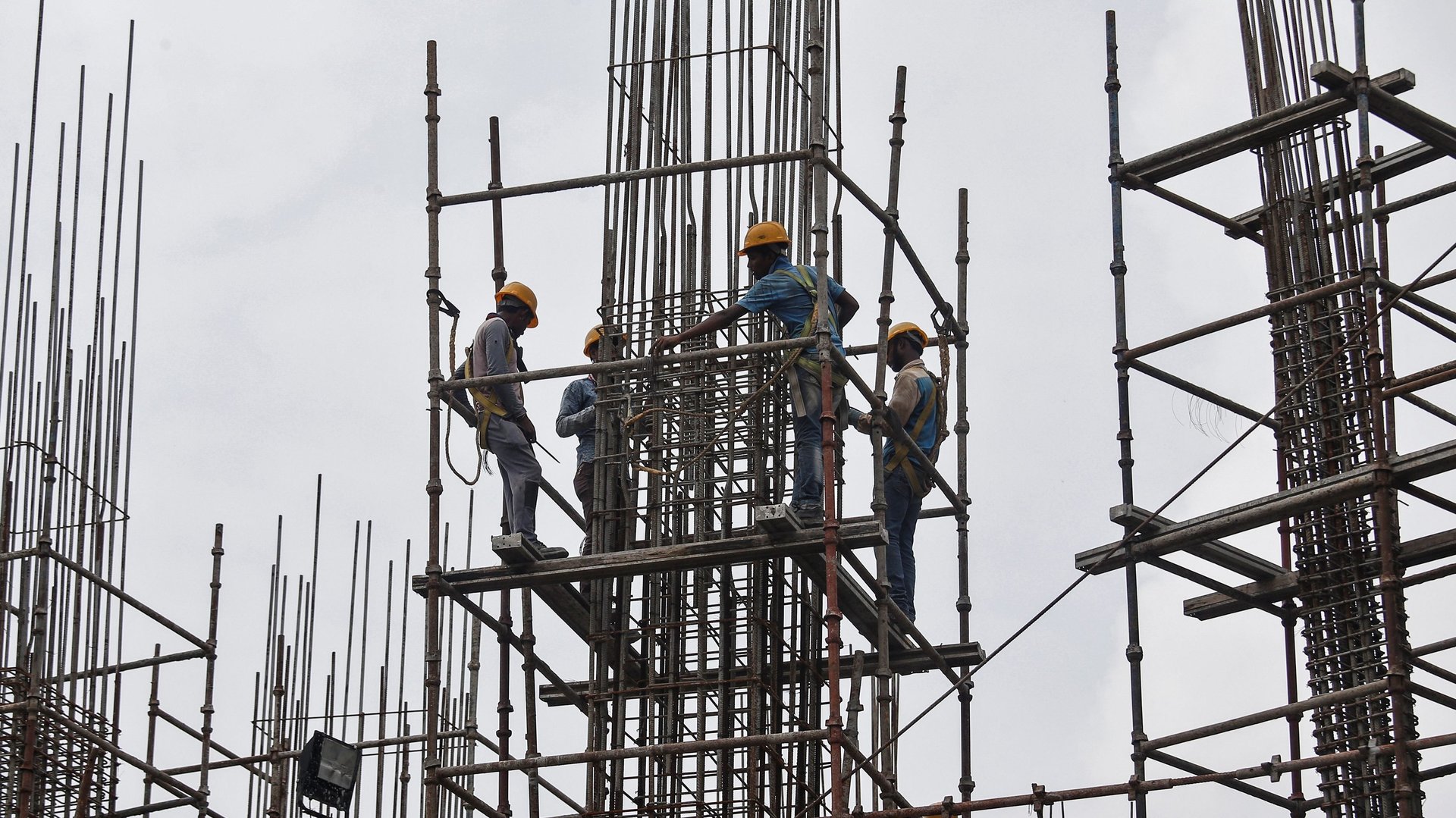While India was busy celebrating its “ease of doing business” ranking, its real economy tanked
Suddenly, it seems like everything is shrinking in India: Our capacity for tolerance and diversity, the space for democratic expression and dissent—and now, economic growth.


Suddenly, it seems like everything is shrinking in India: Our capacity for tolerance and diversity, the space for democratic expression and dissent—and now, economic growth.
The warning signs have reached a point where they cannot be ignored any longer, and more people, including prominent business leaders, are speaking out. Yet, at least overtly, the government is in denial, claiming that this serious slowdown is at most a “correction,” resulting from “an excess of reforms,” all of which will make everything better very soon.
The writing is on the wall
The economic data coming out now are stark. There is negative growth in the core industrial sector as passenger vehicle sales, tractor sales, two-wheeler sales, and domestic air traffic growth have all been declining for around six months.
Other consumer durables, like white goods, also show a hit in sales. Sales of fast moving consumer goods (FMCG), normally the last to react, are slowing down.
Capacity utilisation in all manufacturing segments is apparently below 70% on average, even as inventories pile up, rail freight traffic is now below the past five years’ average, and the real estate sector is stuck with over seven years’ stock of unsold buildings.
All this comes even as the credibility of India’s official GDP data is being questioned, as it does not appear to capture the material realities faced by millions of producers, employers, and workers.
Meanwhile, low inflation rates, the only bright spot on the horizon, seem to be yet another symptom of the slowdown. Core inflation is at its lowest in two years, reflecting weak demand for both consumption and investment goods.
Poor management
What is happening now is only the culmination of a medium-term trend, that has been apparent for a while.
This is clearly a crisis of aggregate demand, brought about by poor economic management over the past several years, in a broader context of a growth process based on increasing inequality.
The unfolding scenario of falling employment and wages, ever since demonetisation in November 2016, which was exacerbated by the poorly implemented goods and services tax (GST), has added to a medium-term growth trajectory in which the fruits of growth went disproportionately to a small elite of big capital and rich individuals, without translating into broader economic improvements.
Meanwhile these badly managed policy measures served as body blows to informal economic activity, which went through significant declines in employment and output. However, they did not immediately affect the formal sector.
This is because, at first, formal enterprises gained at the cost of informal ones (except in agriculture where almost all producers suffered), and so they experienced no real downturn and, in some sectors, possibly even a slight increase in sales. But the resulting loss in livelihoods and wages eventually had an effect on the demand for the formal sector output, because there were no counterbalancing moves by the government.
This is starkly evident from the employment data, which otherwise would make no sense.
Shrinking labour force
Data from the latest labour force survey reveal that the total workforce reduced by 9.1 million people (from 474 million to 465 million) between 2011-12 and 2017-18, a period when GDP was supposedly growing rapidly and the demographic dividend was supposed to bring us the greatest benefits.
Employment in agriculture fell by 26.7 million, mostly women, but this could be expected and would even be desirable in a period of rapid industrialisation. Unfortunately, the manufacturing industry did not create jobs either—employment in manufacturing also fell in this period, by 3.5 million. The boom sectors of the 2000s, construction and services, added only 3.6 million and 17.1 million respectively, not enough to make up for the job losses in other sectors.
This has to have a negative impact on aggregate demand, which would then have a more prolonged and severe impact through the negative multiplier effects of employment losses.
This clearly required countervailing measures by the government.
Cosmetic changes
But in subsequent years, even as consumption demand was negatively affected (which in turn reduced the profit expectations of producers in formal enterprises), the government did not step up in terms of a fiscal stimulus designed to counteract these negative effects.
Instead, it kept assuming or hoping that cosmetic measures (like fiddling with “ease of doing business” indicators and further measures to ease foreign capital inflow) would somehow attract investment into the economy that would counteract all the negative impulses.
Macroeconomically speaking, this was hardly likely, since investment comes where there is expectation of profits, which in turn comes with growing markets.
In the Indian case, the insufficiency of domestic investment was worsened by problems in the banking sector, which was saddled with high ratios of non-performing loans.
In the wake of demonetisation, when bank credit froze for a while, non-bank financing was promoted heavily, especially to medium-sized enterprises; but that too has come a cropper with the near-collapse of Infrastructure Leasing & Financial Services (IL&FS).
.
So those who can access credit are wary of investing and would rather invest abroad, while those who still wish to invest cannot access credit.
The obvious immediate task for the government is to revive demand, which at the moment is only possible through an injection of public spending, ideally in necessary infrastructure and in social sectors that have high employment multipliers.
This is the immediate medicine required to keep the patient alive. Further improvement requires more fundamental reforms that would change the orientation of economic strategy away from the misplaced belief that markets will solve everything, to more employment-generating innovation-based growth.
We welcome your comments at [email protected].